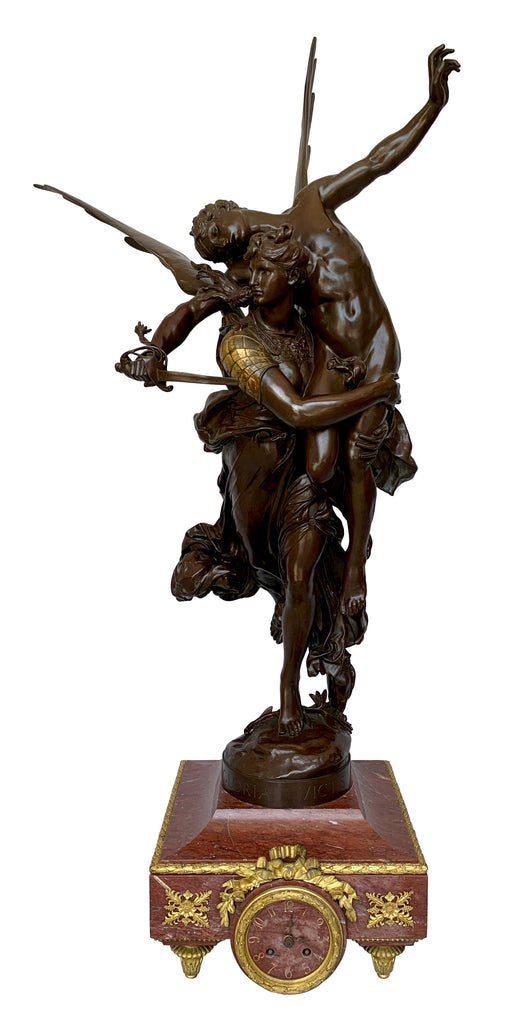MARIUS JEAN ANTONIN MERCIÉ (FRENCH, 1845-1916) 'GLORIA VICTIS'
by Marius-Jean-Antonin Mercié (French, 1845-1916)
$34,450.00
The description highlights a magnificent French patinated bronze figural group titled 'Gloria Victis,' created by Marius-Jean-Antonin Mercié. This exceptional sculpture is mounted on an ormolu-adorned rouge marble clock base, adding to its visual splendor.
Originally, Mercié's plaster sculpture of Gloria Victis garnered recognition at the 1874 Paris Salon, marking its acclaim within the artistic community. The highly detailed bronze sculpture, cast by the prestigious Barbedienne foundry, signifies its quality and artistic significance. Barbedienne was renowned as a leading manufacturer of artistic bronzes during the latter half of the 19th century.
Notably, versions of this sculpture can be found in prestigious locations such as the National Gallery of Art in Washington DC and facing Saint André's Cathedral in Bordeaux, France, attesting to its artistic prominence and widespread recognition.
The sculpture 'Gloria Victis' is renowned for its artistic merit, historical context, and the skillful craftsmanship associated with Mercié's work. Its depiction of triumph and pathos resonates with viewers, making it a celebrated and esteemed piece within the realm of sculptural art from the late 19th century.
Signed A. MERCIÉ
Titled GLORIA VICTIS
Inscribed F. BARBEDIENNE, Fondeur Paris
FRANCE, Circa 1875
Height: 44" (111 cm)
Width: 22" (56 ccm)
Depth: 18" (45 cm)

















